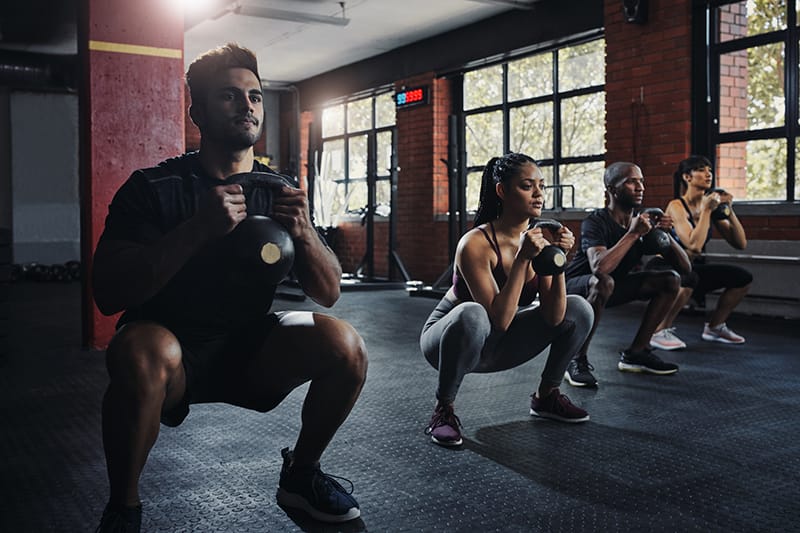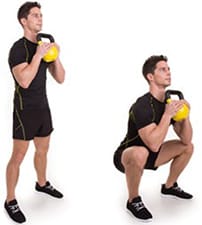Deep squats break the conventional wisdom on proper form. When practiced safely, they can help multiple muscle groups and increase flexibility.
Posted
on Monday, March 11, 2019
 When you were first introduced to the weight room in P.E. or practice, you met the squat rack. Squats have been a staple of workout routines and strength training for years. They’re a favorite among fitness experts because they effectively exercise multiple leg muscles.
When you were first introduced to the weight room in P.E. or practice, you met the squat rack. Squats have been a staple of workout routines and strength training for years. They’re a favorite among fitness experts because they effectively exercise multiple leg muscles.
Squats benefit more than your quads, hamstrings and calves. They actually give you a full-body workout, blending flexibility, stability and functional strength for your upper and lower body.
Most of us were taught to squat down until our legs were parallel to the ground. But the trend in recent years has been to squat deeper — as low as you can go. When a fitness trend comes along and bucks what you think you knew, it’s important to ask questions.
 What’s a deep squat?
What’s a deep squat?
There are various definitions of a deep squat, but it is generally accepted that a deep squat consists of a knee angle greater than 120 degrees. That means the crease in your hip drops below your knees and your butt nearly touches the ground.
Are there any benefits of doing deep squats?
Squats are beneficial no matter how deep you go. Your squat form depends on your flexibility, range of motion, strength and training goals. But there are some added benefits if your body allows you to go deeper.
- Greater body workout – A deep squat requires more than just your legs. It takes full range of motion from your ankles up to your shoulders and mobility in your core and spine. All the joints and muscles involved are getting exercise.
- Increased knee stability – It was once thought that deep squats lead to instability in your knee, thus the conventional wisdom. Research since then has shown that the opposite is true: deep squats actually lead to stronger ligaments and better knee stability.
- Increased activation of gluteus maximus and other hip extensors – As you go down deeper, it becomes more and more difficult. The added difficulty makes your butt and hips work harder, which increases their strength.
- Decreased forces on the ACL and PCL – Your knee is more stable in a deep squat, so it’s placing less force on the ligaments holding it together. At the bottom of a deep squat, there’s not much pressure on your ACL and PCL — most of the stress actually occurs at the beginning of a squat.
What’s the right form for a deep squat?
Your form is critical. Like with any exercise, if you lack proper form, you risk injuring yourself. In deep squats, that means potential damage to your meniscus or knee cartilage, or back and spine injuries due to inadequate stabilization.
To incorporate deep squats into your workout routine safely, follow these key steps for correct form:
- Keep your heels in contact with the ground throughout the entire range of the squat. Ankle mobility is key to maintaining form and stability.
- Keep a neutral or slightly extended spine. Don’t hunch down or curl your shoulders.
- Sit back into the squat like you’re trying to sit down. Resist pushing your knees forward as the stress and force on them increases as you squat.
- Adjust your stance to what feels most natural. Start with your feet shoulder-width apart and gradually move them out until it feels right. The wider your stance, the more you exercise your glutes and the less you work out your quads.
The guidance on squats has changed over the last several years. While you can still reap the benefits of a traditional squat, going deeper can improve your overall strength and flexibility. If you want to try this new, full-body workout but have safety concerns, visit a physical therapist to ensure you learn the proper form to avoid injury.
All information offered on The Iowa Clinic website is intended to serve as general educational information only. Any content, product or service is not intended to be a substitute for professional medical advice, diagnosis or treatment. If you believe you have a medical issue, always seek the personalized advice of your physician or qualified healthcare provider.
The Iowa Clinic may provide links to outside sources for additional resources or information and is in no way responsible for the information provided by other organizations or sources. © The Iowa Clinic, 2024